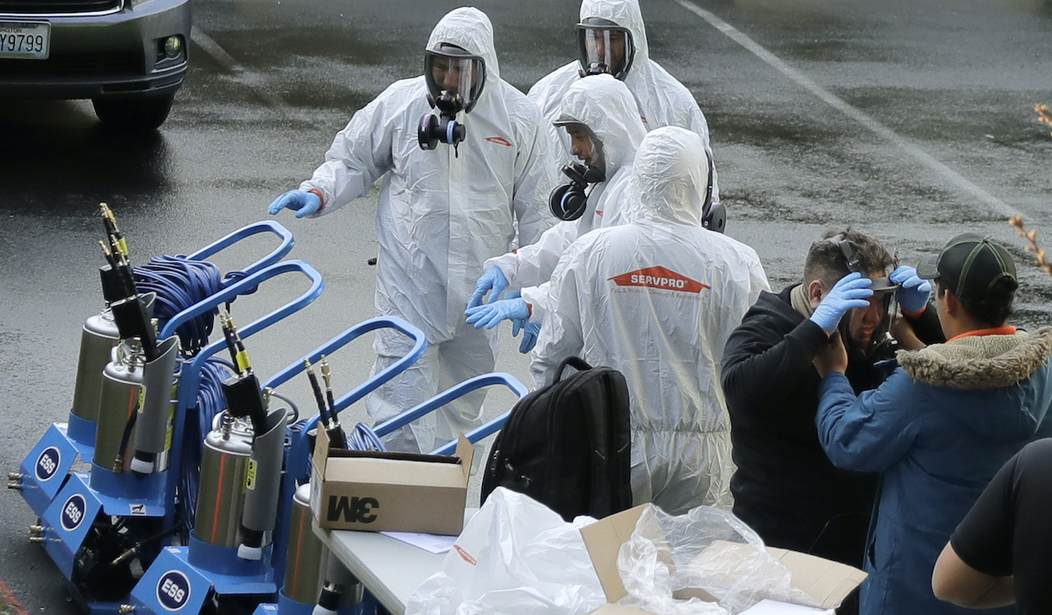The Wuhan Coronavirus pandemic continues to dominate the news and thrash the markets. It’s bad. The disease is serious. It’s highly contagious, but it can also be true that the media is overreacting. Of course, practice the new guidelines from the Trump administration to contain the spread and yes, you should have already been washing your hands and not touching your face as often as possible even before this all began. In the U.S., coronavirus cases have surpassed 15,000, with over 200 deaths. It’s serious, but not nearly as bad (yet) as Swing Flu which infected 60 million and killed 12,000. The seasonal flu is also responsible for tens of millions of infections with tens of thousands of deaths each year. This year, we’re expected to have 32-49 million infections from the flu, with 18-50,000 deaths.
Again, this is serious, but not apocalyptic. Still, social distancing must be enacted to avoid spreading the virus. Then, we can go about our normal daily routines and the economy can recover. Small businesses are already feeling the pinch and tax deadlines have been extended to July 15.
The world seems to be on fire, but there is good news coming from this pandemic. The number of recoveries is high. Worldwide there have been over 250,000 total cases, a little over 158,000 of which are still active. Most are mild, some 151,000 cases are classified as such, with over 100,000 making full recoveries. Worldwide the death toll is a little over 10,500. In South Korea, which had a nasty outbreak but took measures to control the spread, the number of recoveries has now surpassed new cases (via Newsweek):
New cases of COVID-19 in South Korea appear to be declining, and on Friday the Korea Centers for Disease Control and Prevention (KCDC) reported more recoveries than new cases.
South Korea has had one of the largest outbreaks of the new coronavirus, and nearly 8,000 people have contracted the virus, which has killed 67 people in the country. The outbreak appears to be waning, though, and on Friday the KCDC reported that 177 additional people were pronounced recovered from the virus and that there were only 110 new cases.
South Korea reported its first case on January 20, and in the two months since, 510 people have recovered and 7,402 remain in isolation. Cases appear to be on the decline, but the KCDC urged people not to become complacent about prevention measures because new cases are still emerging in small clusters from businesses, churches, cafes and medical facilities.
Through the weekend, everyone was advised to continue practicing social distancing and personal hygiene measures and to refrain from visiting community spaces or public gatherings.
"We assess that we've put out a big fire but cannot lower our guard yet," Seoul Mayor Park Won-soon told a briefing, according to Reuters.
Recommended
Overall, recovery rates should be very high, like 90 percent or more (via NY Post):
So here’s the good news about the coronavirus.
The average healthy person who gets the virus might suffer a dry cough, fatigue and fever and be sidelined for a week or two, experts said Tuesday.
But after that, they should be fine.
“You stay at home, you’re not going out, and if it gets more serious, you check in’’ at a medical facility or go to the ER, Manhattanville College Professor Anna Yeung-Cheung said of patients.
“I’m not saying you shouldn’t be cautious,’’ she said. “I’m saying you shouldn’t go too crazy, like, ‘I’m dying.’”
Dr. Marc Siegel, a professor of medicine at NYU Langone Medical Center, predicted that the recovery percentage rate for the virus would likely reach “the high 90s.”
“One of the problems with this is it’s an evolving scenario, and people jump to the worst-case scenario,” said Siegel, also medical director of SiriusXM’s Doctor Radio.
“It’s too much doomsday stuff.”
Yet, even those with mild symptoms can spread it to those who are most likely to die from infection, like the elderly and immunocompromised, and this virus can live on some surfaces for up to three days, increasing the risk of spreading the infection from those who don’t follow the guidelines put forward by the Trump administration. It can also survive in the air for hours, hence the shelter-in-place orders issues in some states, like California. New York recently issued what is essentially a statewide quarantine order.
Practice good hygiene and help save those who are at risk of infection by staying home. The recovery rate is good news. At the same time, Dr. Deborah Birx, the Wuhan Coronavirus Response Coordinator for the Trump White House, did note that in Italy, which is dealing with a horrific outbreak that has killed thousands, the mortality rate for men is twice compared to women for every age group.
BREAKING: Coronavirus Task Force Coordinator Dr Deborah Birx says info coming in from Italy suggests the mortality rate for men is double what it is for females, for every age group
— Josh Lederman (@JoshNBCNews) March 20, 2020

























Join the conversation as a VIP Member